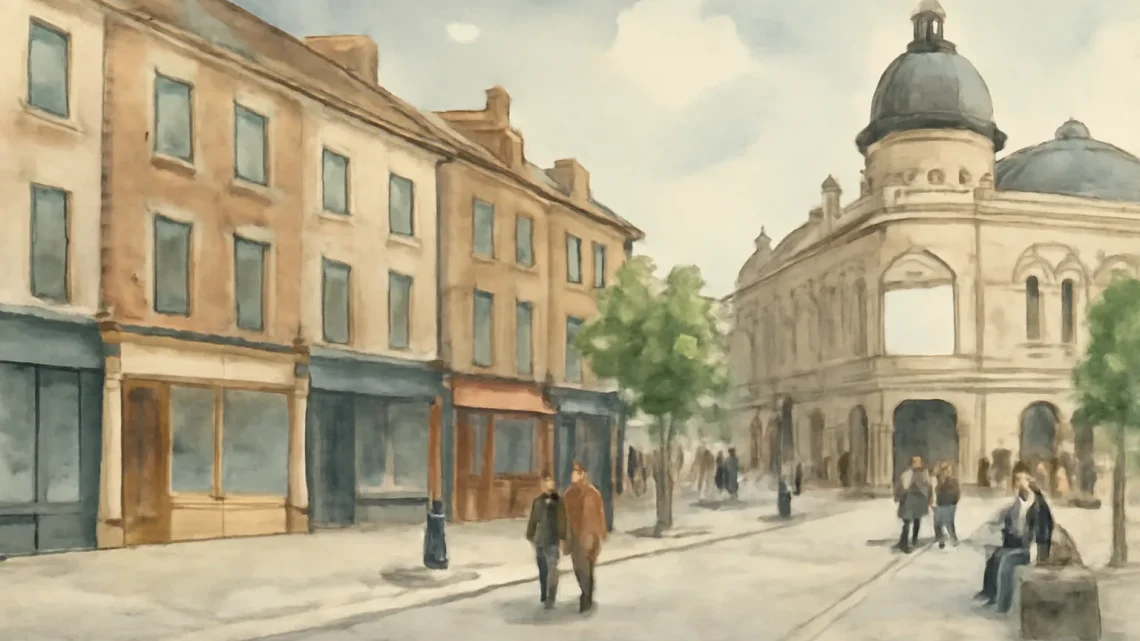
Heritage Regeneration Transforms New Briggate in Leeds
October 23, 2025New Briggate street in Leeds benefits from heritage-led regeneration
New Briggate, a historic street in Leeds city centre, has undergone significant regeneration work aimed at enhancing its architectural and cultural character. The scheme, supported by £1.3 million in funding from Historic England’s High Streets Heritage Action Zones (HAZ) programme, has now been completed after three years of improvements.
Restoration and improvements
The regeneration focused on restoring traditional features and improving public spaces along New Briggate to support its independent businesses and create a more attractive environment for visitors. Key works included:
- Installation of timber sash windows and reinstatement of traditional shopfronts on buildings opposite Leeds Grand Theatre, using conservation methods and materials sympathetic to neighbouring landmarks such as the Grand Arcade and St John’s Church.
- Refurbishment of the approach steps to the churchyard at St John’s Church, the oldest surviving place of worship in Leeds city centre, with new Yorkstone paving.
- Restoration of damaged terrazzo paving at the upper entrance to the Grade II-listed Grand Arcade.
Community engagement and cultural projects
Alongside physical improvements, the scheme included community engagement activities such as pop-up exhibitions and walking tours. These events aimed to provide insights into the cultural and historical development of New Briggate. One such project, Hidden Histories of New Briggate, was led by East Street Arts and involved artists exploring stories from the street’s past.
Context of wider area transformation
The HAZ scheme complements broader changes in the New Briggate area, including:
- Pedestrianisation of the lower end of New Briggate, creating a traffic-free zone with trees, benches, and street café seating.
- Highway infrastructure improvements such as wider pavements and new cycling facilities.
- Public realm enhancements on nearby Merrion Street, including new surfacing and footways.
- Opera North’s £18 million redevelopment of its buildings on New Briggate and Harrison Street.
These infrastructure improvements were facilitated by the permanent re-routing of buses to Vicar Lane, part of the £173.5 million Leeds Public Transport Investment Programme.
Statements from officials and stakeholders
Councillor Jonathan Pryor, Leeds City Council’s deputy leader and executive member for economy, transport and sustainable development, said the project demonstrated how Leeds’ history can positively influence its present and future. He highlighted the importance of partnership working and expressed optimism for the continued success of New Briggate and its businesses.
Historic England’s conservation architect Bryan Davies described the scheme as evidence that heritage-led regeneration can drive sustainable growth and improve high streets as places to work, live, and visit.
Douglas West, property director at Grand Arcade owner ATC Properties, praised the restoration of the terrazzo paving outside the Grand Arcade entrance, noting its positive reception by businesses and customers.
Historical significance
While St John’s Church dates back to the 1630s, New Briggate itself was established in the mid-19th century as a connecting street between Briggate and North Street. The area’s historic importance was recognised in 2017 when New Briggate became part of the Grand Quarter Conservation Area.
Background on the High Streets Heritage Action Zones programme
The High Streets Heritage Action Zones was a £95 million government-funded initiative led by Historic England. It aimed to deliver lasting improvements to historic high streets through repair and enhancement works, alongside arts and cultural programmes, to benefit local communities, businesses, residents, and visitors.


